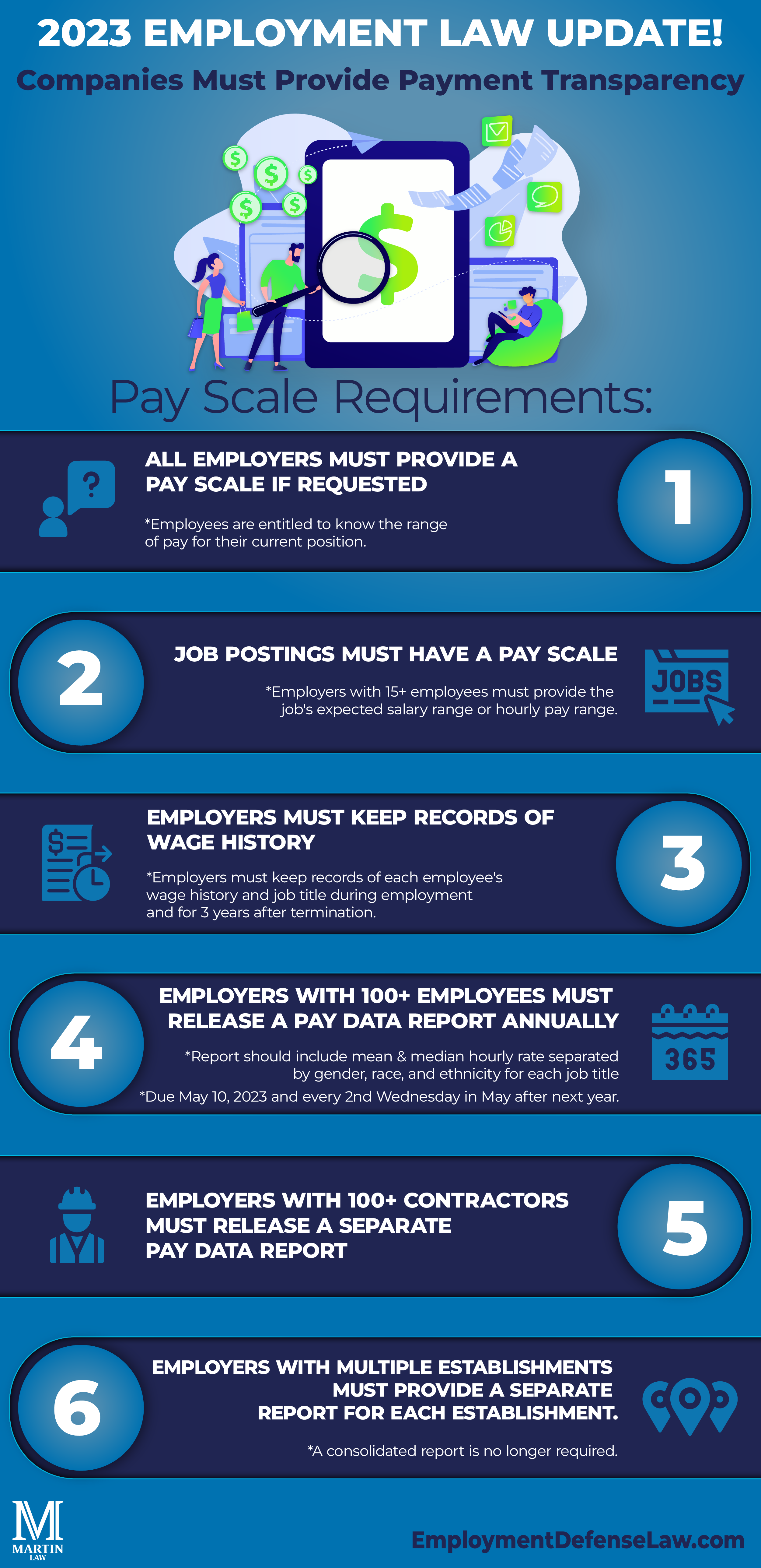Employers in California will soon be required to disclose pay ranges on job postings and to requesting employees. Large employers will also be required to disclose additional pay data in their annual reports.
On September 27, 2022, California Governor Gavin Newsom signed SB 1162. This new law becomes effective on January 1, 2023, and different parts of it will impact all employers in California.
Starting January 1, 2023, employers with 15 or more employees are required to include the pay scale for positions in job postings.1 If the employer uses a third party to list the job posting, the employer must provide the pay scale information to the third party.2 Pay scale is defined by law as “the salary or hourly wage range that the employer reasonably expects to pay for the position.”3
Additionally, every employer (of any size) must provide employees with the pay scale for the position they are currently employed in upon request.4

Existing law already requires an employer, upon a job applicant’s request, to provide the pay scale for a position to the job applicant. A failure to provide pay scale information can lead to a civil penalty of at least one hundred dollars ($100) and a maximum of ten thousand dollars ($10,000) per violation.5 First-time offenders are likely to receive more lenient penalties than second-time offenders. For an employer’s first failure to include the pay scale in job postings, no penalty will be assessed if the employer shows that they have updated all job postings for open positions to include the pay scale.6
Furthermore, employers with 100 or more employees must report, within each job category, the median and mean hourly rate for each combination of race, ethnicity, and sex.7 California law will require employers with 100 or more employees hired through labor contractors to submit a separate pay data report.8
Employers with multiple establishments no longer have to provide a consolidated report, but must provide a report for each establishment.9
Reports are now due by the second Wednesday of May 2023 (which is May 10, 2023), and on or before the second Wednesday of each subsequent May.10 Pay data of the prior year must be submitted to the California Civil Rights Department (CRD). There are civil penalties for employers who fail to file pay data reports.11 The penalty amount per violation is a maximum of one hundred dollars ($100) per employee on an employer who fails to file the required report. Subsequent failures to file the report are subject to a maximum of two hundred dollars ($200) per employee.12
All employers must maintain records of job titles and wage rate history for the duration of each employee’s employment and for three years after the employment terminates.13 The state may inspect these records. Although the new law will only require records to be kept for three years, employers are recommended to retain employee wage histories for at least four or ideally five years after an employee is terminated due to the potential for class actions and other lawsuits that may arise. A failure to maintain adequate records may lead to a rebuttable presumption in favor of the aggrieved employee in court.
Failure to comply with these pay transparency provisions is likely to lead to class actions and PAGA claims. To prevent liability, employers should ensure that their policies comply with the above requirements. In the event that a PAGA claim is brought, employers should be aware of the 33-day cure period for certain violations and seek to remedy them immediately.14
While this is a currently unsettled question, the new law will likely apply to remote workforces as well. Therefore, any employers located in California with remote workforces should be ready to adjust their policies accordingly.
Employers in California should be aware of these laws and the impact they may have on their businesses. If you have any questions, please contact an experienced employment attorney at Martin Law Firm, P.C.
Citations
- Cal. Lab. Code 432.3(c)(3).
- Cal. Lab. Code 432.3(c)(5).
- Cal. Lab. Code 432.3(m)(1).
- Cal. Lab. Code 432.3(c)(2).
- Cal. Lab. Code 432.3(d)(4).
- Cal. Lab. Code 432.3(d)(4).
- Cal. Lab. Code 12999(a)-12999(b).
- Id.
- Cal. Lab. Code 12999(c).
- Cal. Lab. Code 12999(a)(1)-(2).
- Cal. Lab. Code 12999(f).
- Cal. Lab. Code 12999(f).
- Cal. Lab. Code 432.3(c)(4).
- Cal. Lab. Code 2699.3(c)(2)(A).


